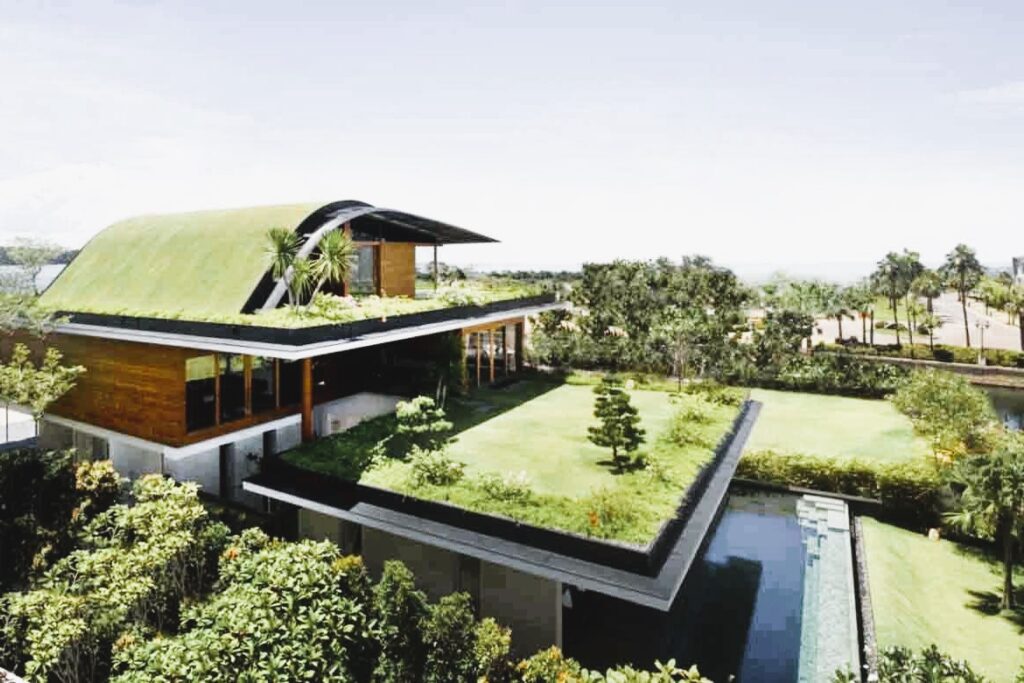Creating an Eco-Friendly Home: Sustainable Practices for a Greener Future
In today’s world, where environmental concerns are at the forefront of global discussions, creating an eco-friendly home is a crucial step towards a sustainable future. An eco-friendly home not only reduces our carbon footprint but also promotes healthier living, lowers energy costs, and contributes to the preservation of our planet. In this article, we will explore various sustainable practices that can transform your house into an environmentally friendly haven.
- Energy-Efficient Lighting: One of the simplest ways to make your home eco-friendly is by replacing traditional incandescent light bulbs with energy-efficient alternatives. LED (Light Emitting Diode) bulbs consume significantly less energy and have a longer lifespan. By transitioning to LED lighting, you can reduce energy consumption and lower your electricity bills while enjoying the same level of illumination.

- Energy Conservation: Conserving energy is essential in creating an eco-friendly home. Start by unplugging electronics when not in use, utilizing power strips to easily turn off multiple devices, and optimizing your thermostat settings. Additionally, consider installing energy-efficient appliances, such as ENERGY STAR-rated refrigerators, washing machines, and dishwashers, which are designed to consume less energy without compromising performance.
- Renewable Energy Sources: Embracing renewable energy sources is a major step towards sustainability. Solar panels are an excellent investment for homeowners, as they generate electricity using sunlight, a clean and abundant energy source. By harnessing solar power, you can significantly reduce your dependence on fossil fuels, lower your energy bills, and contribute to a greener grid.
- Water Conservation: Conserving water is vital for an eco-friendly home. Install low-flow showerheads, faucets, and toilets to minimize water usage. Collect rainwater for watering plants or gardening, and consider using water-efficient landscaping techniques, such as xeriscaping, to reduce outdoor water consumption. Fixing leaks promptly and being mindful of water usage habits can further conserve this precious resource.
- Sustainable Materials: When renovating or building your home, opt for sustainable and eco-friendly materials. Consider using reclaimed wood, bamboo, or cork flooring, which are renewable resources. Choose paints, adhesives, and finishes with low or zero volatile organic compounds (VOCs) to minimize indoor air pollution. By selecting sustainable materials, you reduce the environmental impact associated with construction and create a healthier living space.
- Proper Insulation: Insulating your home effectively is crucial for energy efficiency. Proper insulation minimizes heat loss in winter and heat gain in summer, reducing the need for excessive heating or cooling. Inspect windows, doors, and walls for gaps or leaks and seal them to prevent drafts. Consider upgrading to energy-efficient windows, which provide better insulation and contribute to overall energy savings.
- Waste Reduction and Recycling: Implementing waste reduction and recycling practices is essential for an eco-friendly home. Set up a recycling system that separates recyclable materials from general waste. Compost organic waste to reduce landfill contributions and create nutrient-rich soil for your garden. Invest in reusable products, such as cloth bags, water bottles, and food storage containers, to reduce single-use plastic consumption.

- Natural Light and Ventilation: Utilize natural light and ventilation to reduce the need for artificial lighting and mechanical cooling. Maximize the use of windows and skylights to bring in ample daylight, which not only reduces energy consumption but also enhances the aesthetic appeal of your home. Additionally, ensure proper ventilation by installing efficient fans or utilizing natural cross-ventilation techniques, promoting fresh air circulation and reducing reliance on air conditioning.
- Green Landscaping: Extend your eco-friendly practices to your outdoor space. Opt for native plants that require less water and maintenance, reducing the need for excessive irrigation and chemical treatments. Embrace sustainable gardening practices, such as composting, mulching, and using natural pest control methods. Consider installing rain gardens or permeable surfaces to manage stormwater runoff effectively.
- Educate and Advocate: Share your knowledge and experiences with others to promote eco-friendly practices. Educate your family, friends, and neighbors about the importance of sustainable living and encourage them to adopt similar practices. Engage with local environmental initiatives, community gardens, or advocacy groups to collectively make a positive impact.
Transforming your house into an eco-friendly home requires commitment, but the rewards are significant. By embracing sustainable practices, you contribute to a healthier environment, reduce your ecological footprint, and inspire others to follow suit. Together, we can create a greener future for generations to come.
